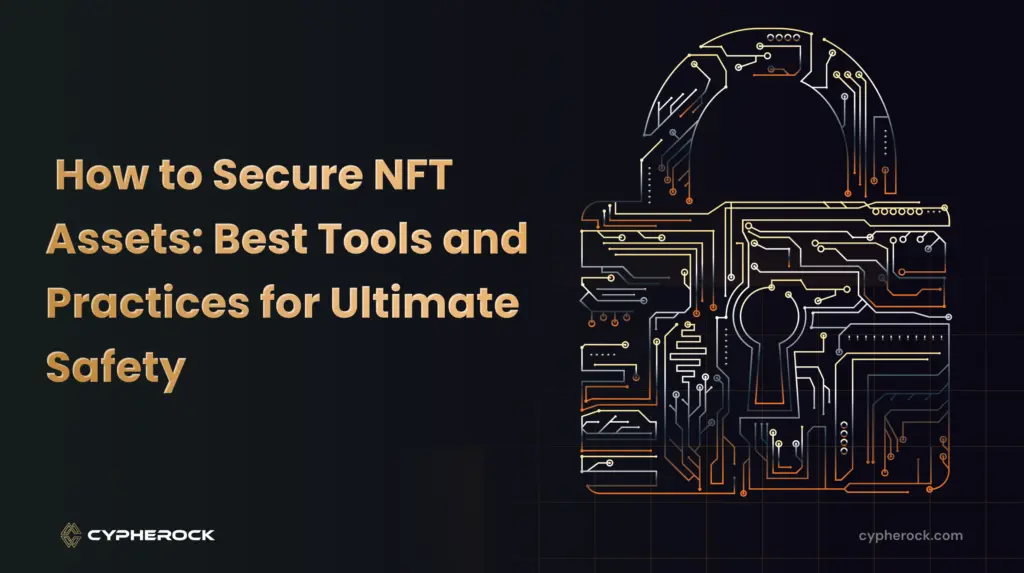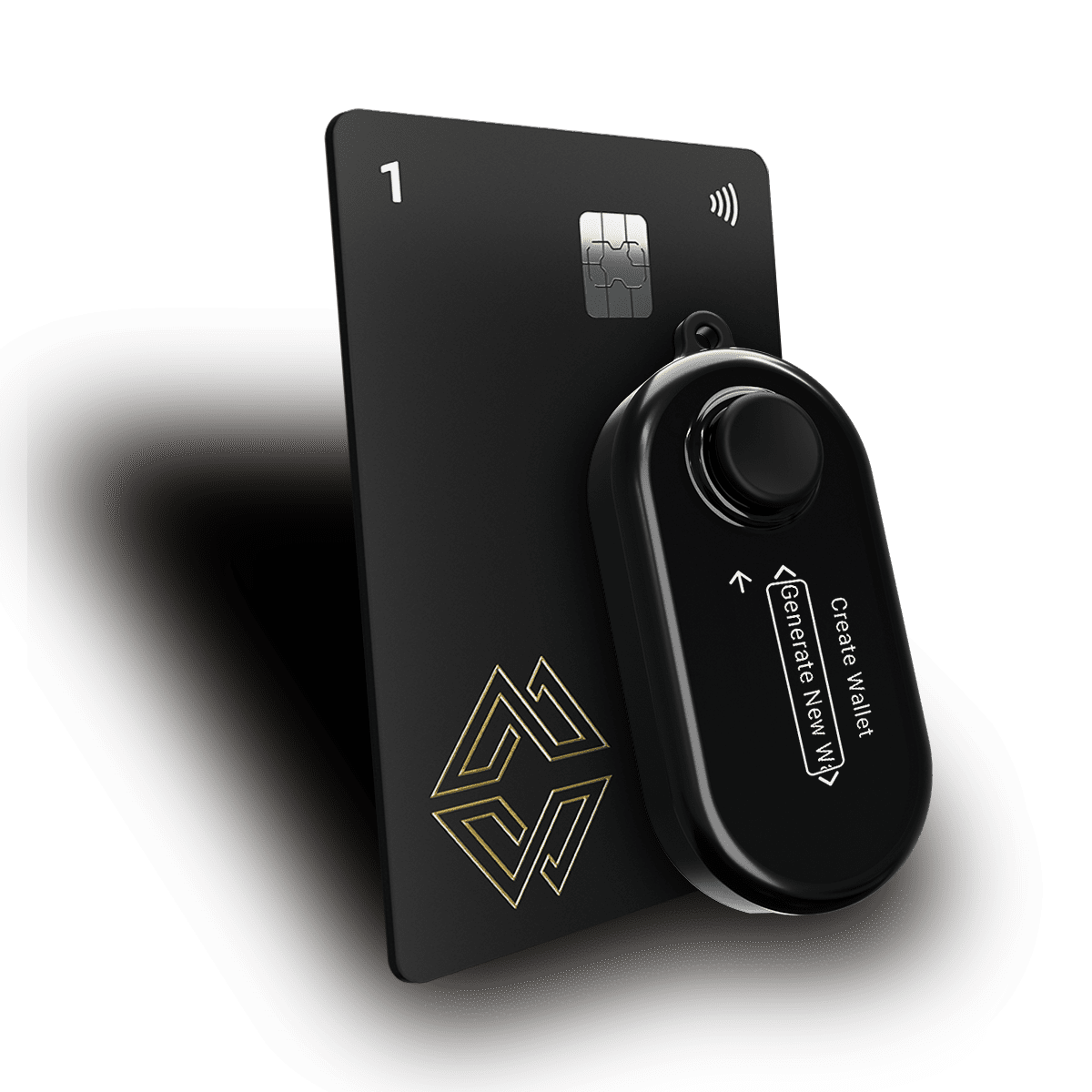

As NFTs (Non-Fungible Tokens) grow in popularity, they’ve become more than just digital art; they represent ownership of unique items, from art to music to virtual assets in games. With this increased value, however, comes increased risk. Just like you wouldn’t leave your house unlocked with valuable items inside, you shouldn’t leave your NFTs vulnerable to cyber threats.
In this article, we’ll show you how to keep your NFT assets safe and secure. You’ll learn about the risks, such as scams and phishing attacks, and discover how to store your NFTs securely using the best tools and methods available.
We’ll also introduce you to Cypherock X1, one of the best hardware wallets for NFT security. By the end, you’ll have the knowledge to protect your digital assets and ensure they stay safe in the ever-changing world of NFTs.
Imagine owning a one-of-a-kind trading card or a rare digital artwork that no one else can have. That’s what NFTs are like, but in the digital world.
Non-Fungible Tokens (NFTs) are unique digital items stored on a blockchain. Unlike regular cryptocurrencies like Bitcoin or Ethereum, NFTs are "non-fungible," meaning each one is different and can’t be replaced by another. Think of them as certificates of ownership for digital assets, like art, music, videos, or even virtual real estate in video games.
When you buy an NFT, you're buying the ownership rights to a unique digital item. Each NFT is recorded on a blockchain, a special kind of digital ledger, which makes it easy to prove that you own it. No one can copy, fake, or steal your ownership without access to your private keys. NFTs are creating a new way to buy, sell, and collect digital items, making them a hot topic in both the art world and the world of digital assets.
Yes, NFTs can be stolen, just like any other digital asset.
While the blockchain itself is secure, hackers or scammers can target the ways you store or interact with your NFTs. If someone gains access to your wallet or private keys, they can transfer your NFTs to their own account without your permission. This is why it’s crucial to keep your private keys safe.
NFTs can also be stolen through phishing attacks, where scammers trick you into revealing your wallet information or signing transactions you didn’t intend to make. These types of attacks are becoming more common as the value of NFTs increases.
In short, while the technology behind NFTs is secure, you must take extra precautions to protect your assets. By understanding the risks and following the right security practices, you can greatly reduce the chances of your NFTs being stolen.
NFT scams and phishing attacks are becoming more common, but there are ways to protect yourself from falling victim.
By staying vigilant and following these steps, you can spot scams and phishing attacks before they can harm your digital collection.
Storing your NFTs securely is crucial to protecting your digital assets from theft or loss. While the blockchain itself is secure, the way you store your NFTs is where you need to be extra careful. Let’s explore some common methods for securely storing NFTs:
A hardware wallet is one of the safest ways to store your NFTs. It’s a physical device that keeps your private keys offline, away from hackers. Because it's not connected to the internet, a hardware wallet significantly reduces the risk of cyberattacks, phishing, and other types of online threats. Examples of hardware wallets include the Ledger Nano and Cypherock X1. These wallets provide an extra layer of security, ensuring your NFTs stay safe even if your computer or phone is compromised.
Software wallets are apps or programs that store your NFTs on your computer or mobile device. While they’re more convenient and easier to use than hardware wallets, they are more vulnerable to hacks. Software wallets like Metamask or Trust Wallet offer ease of access, but it’s important to secure them with strong passwords and enable features like two-factor authentication (2FA). Always back up your wallet's recovery phrase and store it safely offline.
IPFS is a decentralized storage system that can be used to store the metadata and files of NFTs. Unlike traditional cloud storage, IPFS keeps data distributed across a network, reducing the risk of central points of failure. By using IPFS, NFT creators and holders can store files like images or videos in a decentralized manner, ensuring that the data linked to the NFT is permanently available and secure. However, while IPFS ensures that the content remains accessible, it’s important to combine it with a secure wallet for storing the NFT itself.
When it comes to securing your NFT assets, the Cypherock X1 stands out as one of the best hardware wallets available. It offers top-tier security features that make it an excellent choice for both beginners and experienced users in the NFT space.
The Cypherock X1 combines the best of both worlds: cutting-edge security and user-friendly design. Here’s why it’s one of the best hardware wallets for securing your NFTs:
Cypherock X1 not only stores your NFTs securely but also makes managing and transferring them safer. By keeping your private keys offline and using a multi-device architecture, it reduces the risk of cyberattacks, hacking, and phishing, ensuring that your digital assets are always protected.
If you’re serious about protecting your NFTs and digital assets, the Cypherock X1 is an excellent choice for maximum security without the complexities of traditional systems.
Securing your NFTs is more than just choosing the right wallet. It involves a set of practices that, when followed, can significantly reduce the risk of losing your valuable digital assets. Here are some of the best practices to keep your NFTs safe:
One of the best ways to secure your NFTs is by using a hardware wallet. These wallets store your private keys offline, away from the internet, making them nearly impossible for hackers to access. Whether you choose Cypherock X1, Ledger, or Trezor, hardware wallets are a must for anyone serious about NFT security.
When using software wallets or NFT marketplaces, always enable two-factor authentication (2FA). This adds an extra layer of protection by requiring you to enter a code sent to your phone or email, making it much harder for someone to access your wallet or account without your permission.
Always use strong, unique passwords for your wallet and marketplace accounts. Avoid common passwords or using the same password across multiple sites. A good password should include a mix of uppercase and lowercase letters, numbers, and special characters. Consider using a password manager to keep track of your passwords securely.
Your wallet's recovery phrase is the key to restoring your NFT wallet if you lose access to it. Write it down on paper and store it in a safe, offline location. Never share your recovery phrase with anyone, and don’t store it digitally where hackers might access it.
Phishing attacks are a common way that scammers try to steal your NFTs. Never click on suspicious links or share personal information through email, social media, or websites you don’t trust. Always double-check URLs to make sure they’re from official sources, especially when dealing with NFT marketplaces.
Your private keys are the most important piece of information when it comes to NFT security. Never share them with anyone and always store them in a secure location, such as a hardware wallet or an encrypted file on your computer. If your private key is exposed, your NFTs can be stolen.
Before buying an NFT, always check its provenance (history of ownership) on the blockchain. A genuine NFT will have a clear and transparent ownership record. If something looks suspicious or there’s no history of the NFT, it might be a scam.
When accessing your NFT wallet or making transactions, avoid using public Wi-Fi networks. These networks are less secure, and hackers can easily intercept your data. Instead, use a private, secure connection, or consider using a VPN for extra protection.
Keep your wallet software, apps, and devices up to date. Developers often release updates to patch security vulnerabilities. By staying updated, you ensure you have the latest protections against new types of cyber threats.
Be careful about where and how you share your NFTs. Avoid exposing them on untrusted platforms, and only interact with reputable marketplaces. The more you share your NFTs online, the higher the risk of someone trying to scam or hack you.
As NFTs grow in value, it’s crucial to keep your digital assets safe from theft and scams. While the technology behind NFTs is secure, how you store and protect them is up to you. By following the best practices we’ve shared, you can lower the risk of losing your valuable NFTs.
Using a hardware wallet like the Cypherock X1 keeps your private keys offline, away from hackers. Other steps like enabling two-factor authentication (2FA), using strong, unique passwords, and safely storing your recovery phrase are essential for extra protection. Being cautious about phishing scams, checking NFT provenance, and staying updated on security measures are all key to keeping your NFTs safe.
By applying these tips, you can confidently navigate the world of NFTs, knowing your digital assets are secure. Take action today to protect your NFTs and ensure they remain in your control, no matter what happens online.
